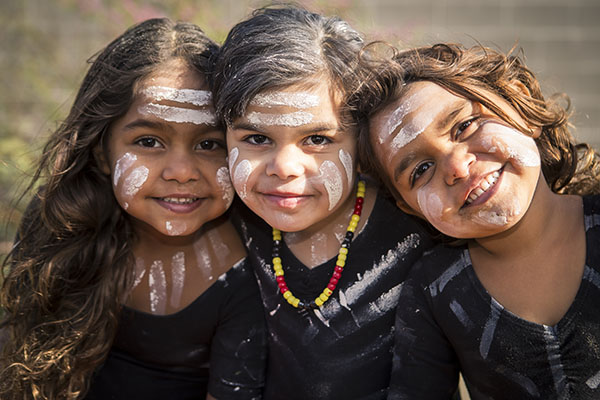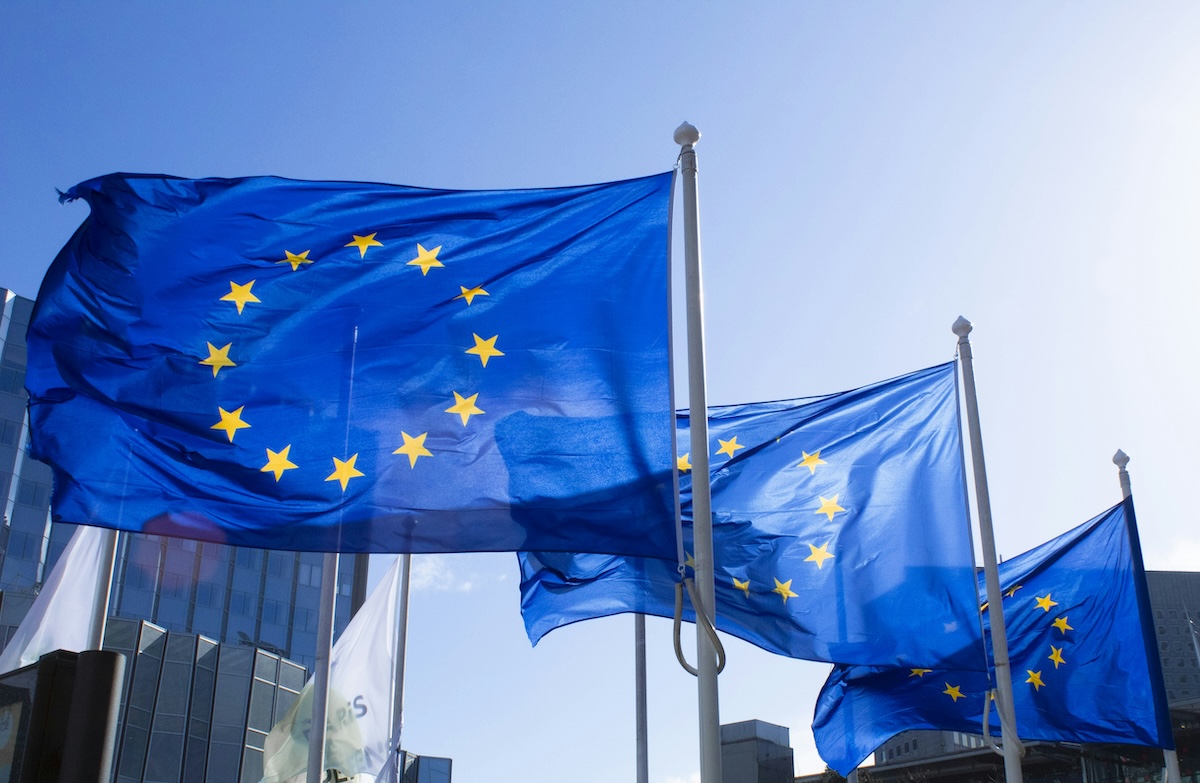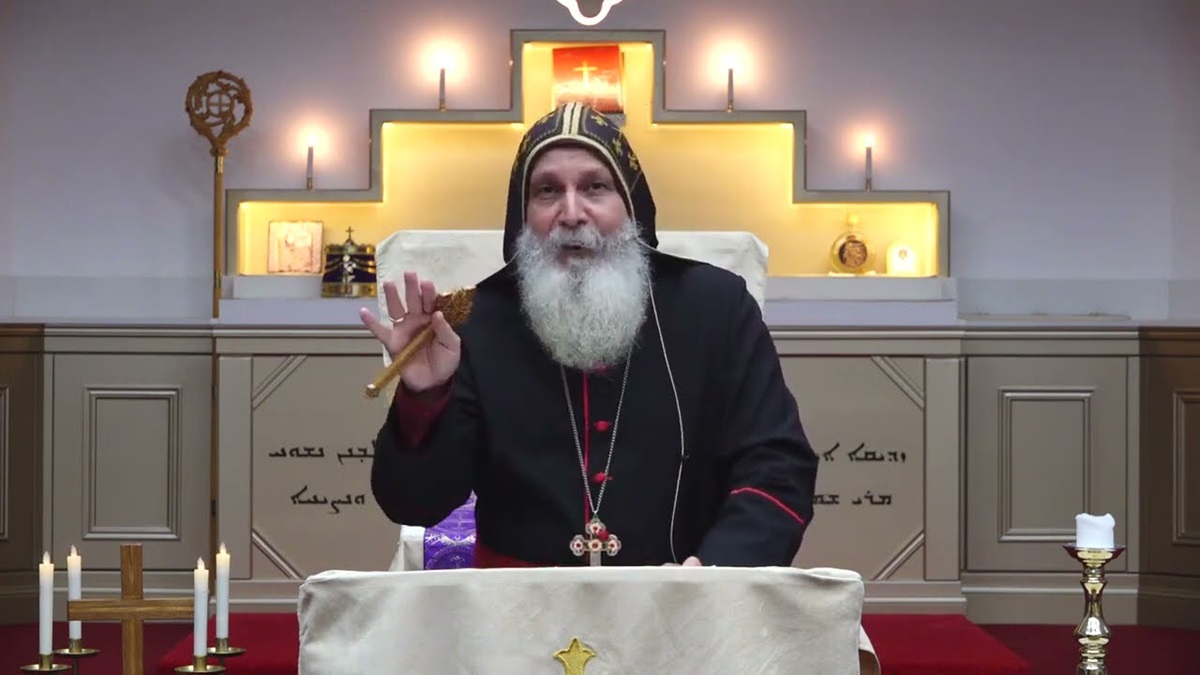
Crimes Against the Australian People
Rampant corruption under the guise of Indigenous rights activism has disenfranchised Aboriginal people over recent decades. Can we stop the rot and start anew?
“Liberty cannot be preserved without a general knowledge among the people [of] that most dreaded and envied kind of knowledge, I mean of the characters and conduct of their rulers.”
— John Adams
Crimes against the people
Unfortunately, Aboriginal people bear the brunt of corruption. These people are attempting to undermine our country and spend prime time participating in public debates, talking rather than making overdue improvements. The racism narrative is used as cover, rather than looking at those committing offences now.
Everything is framed as a historical offence. History is distorted and many have been silenced. Rather than address the real problem, public debates focus on the abstract and lies.
How can we debate this? Bruce Pascoe has made many concerning comments; this is one example:
‘An Aboriginal group known as the Duangwurrung from northern Victoria, not party to the “treaty”, were planning to wipe out the first settlers. The documentary also shows that it was fortunate that the new colony’s governor, Arthur Phillip, was missing a front tooth. This gave him respect among the original inhabitants because it was the tooth knocked out in an initiation ceremony.
Like many Aboriginal people who grew up in white society, the only Australian history Mr Pascoe had heard was about the triumph of European settlement. “I have no doubt it was a war. I believe that most Victorian Aborigines, particularly adult males, had been shot at in the first few decades of white settlement,” he said. “Many were killed and many were injured.” He found that all Tasmanian Aborigines resettled on Flinders Island had shotgun pellets embedded in their flesh.’[1]
In the 1950s, extremist actors ran a campaign to remove Aboriginal farming jobs and their relationships with farming families. Not to say everything was perfect, but it has had catastrophic consequences, including a mass exodus into fringe-dwelling town camps. Of course, they did not ask them what they wanted. I am for both — instead of blaming each other, the time has arrived to expose the elite manipulators behind it. Obviously, they were not motivated to create good outcomes.
Wilcannia elder: extremist actors caused harm
Sissy King, senior Wilcannia elder, explains the influence of extremist actors:
‘Wilcannia was harmonious, they went to church, had jobs, then all of a sudden the “Black Power” activists took over, they stopped the church, brought in alcohol and pushed the harmony away. Now it’s the very same Aboriginal elites who are responsible for this mess who push the Uluru Voice!’
No word for race in any Aboriginal language
Aboriginal social hierarchies are distinct and not easily comparable with classifications in the modern world. For example, there is no word in Aboriginal languages for “race”. The relationship to others has nothing to do with race — it is predetermined by one’s relationship to the land, environment, clan and skin group. The elements of it include relationships, connection, kinship, identity, knowledge, reciprocity and accountability.[2]
Bruce Pascoe has cheapened the interesting aspects of hunter-gatherer family social organisations. He is too busy painting the picture of Bad Coloniser versus Virtuous Native Aboriginal Farmer, none of which is true.
Human behaviours are complex and not defined by racial characteristics alone. There can be no doubt there was intertribal conflict and it was a hard lifestyle being a hunter-gatherer. As Professor Blainey described it, their existence was a triumph.
No ordinary Aboriginal person wants to deindustrialise — in fact, in the remote communities I have lived and visited, they all seek access to modern facilities and nominate things such as affordable electricity as a primary concern for them, their families and communities.
Aboriginal human relationship systems are described as kinship, to describe family relationships, connection with the land and community. Principles of kinship, community connectedness and obligation continue.
Aboriginal kinship systems differ to other models; they are complex difficult to summarise and translate. They are encompassing; outsider relationships are able to be brought into this family relationship system. [3]
This means Aboriginal people have always adopted outsiders as family members, regardless of their cultural background or skin colour.
Public investment in Aboriginal affairs has failed to benefit Aboriginal people. The cause of this is not to do with racism — it is to do with malign agendas and foreign interference. [4]
Christian conscience & political action ended slavery
“In 1787, he came into contact with Thomas Clarkson and a group of anti-slave trade activists, including Granville Sharp, Hannah More and Charles Middleton. They persuaded Wilberforce to take on the cause of abolition, and he soon became one of the leading English abolitionists. He headed the parliamentary campaign against the British slave trade for twenty years until the passage of the Slave Trade Act of 1807.”
“Wilberforce was convinced of the importance of religion, morality and education. He championed causes and campaigns such as the Society for the Suppression of Vice, British missionary work in India, the creation of a free colony in Sierra Leone, the foundation of the Church Mission Society, and the Society for the Prevention of Cruelty to Animals.
His underlying conservatism led him to support politically and socially controversial legislation, and resulted in criticism that he was ignoring injustices at home while campaigning for the enslaved abroad.
In later years, Wilberforce supported the campaign for the complete abolition of slavery, and continued his involvement after 1826, when he resigned from Parliament because of his failing health. That campaign led to the Slavery Abolition Act 1833, which abolished slavery in most of the British Empire. Wilberforce died just three days after hearing that the passage of the Act through Parliament was assured. He was buried in Westminster Abbey, close to his friend William Pitt the Younger.”
Before Federation, Aboriginal people were counted probably more so than other Australians. In fact, Aboriginal people were British subjects and were entitled to the minimum British wage.
Our Federation has been more successful than others, as it was established after slavery ended. In 1727, British Quakers expressed their official disapproval of the slave trade and its campaign led to the Slavery Abolition Act of 1833, when slavery was finally abolished in most of the British Empire.
In 1837, the Aboriginal Protection Society was founded and focused on the treatment of indigenous people within the British Empire. Its motto was Ab Uno Sanguine, meaning “Of One Blood”. [5]
It aimed to ensure the health and wellbeing and the sovereign, legal and religious rights of indigenous peoples and promoted the civilisation of the indigenous people; this held the British Parliament to account for 70 years until 1909. [6]
In 1837 the British House of Commons Select Committee on Aboriginal Tribes (British Settlements) released a report said to be influenced by the mood of the evangelical humanitarianism leading to the abolition of slavery in Britain and its colonies. The report emphasised the importance of Aboriginal people enjoying equal protection of the law as British subjects, and that through the protection of these rights they would ultimately be taught the benefits of Christianisation and civilisation. [7]
The report made recommendations, including reducing frontier violence by the application of the rule of law and other approaches, such as spreading Christianity and prosecuting renegade sailors, European whalers and escaped convicts. [8]
Aboriginal people could marry and work. They were not slaves. Although the system was far from perfect, it was better than most.
As abovementioned, the Aboriginal Protection Society fought to prosecute renegade European whalers, sailors and escaped convicts responsible for frontier violence through the application of the rule of law. Those claiming the Crown was involved in any type of systematic organised genocide program against Aboriginal Australians are liars, using Aboriginal people to distort history and undermine Australia!
It is a fact the society campaigned to ensure the findings of the report were widely known and implemented in policies of the day.
After Federation, State government policies and legislation had an overriding influence on Aboriginal Australians and Commonwealth government involvement became secondary.
Green elites push a racist, divisive agenda
There are many mistruths promoted in relation to Aboriginal history and race relations. For instance, about 77 per cent of Aboriginal Australians marry non-Aboriginal people. In the US the highest interracial rate is around 44 per cent, found in Hispanic populations.
If there was an issue of race superiority and segregation, one would expect a corresponding low marriage integration.
Does Australia have a serious racial problem?
The elites, whose salaries are paid by the public purse and who are located within our valued institutions, think so.
- Dr Drew Cottle, a Senior Lecturer in Politics and History at Western Sydney University, in his comparative analysis believes Aboriginal Australians were the slaves of slaves and the most exploited subject peoples in the world. [9]
- In 1981, Paul Hollander, an influential Hungarian-born political sociologist, wrote that racism had all but disappeared in the USSR and Australia needed communism to end racism.
- He argued: “Ideas are weapons [and] the favourable impressions and the hoped-for publicised accounts of pilgrims are political assets to be nurtured carefully.” [10]
The discourse in Aboriginal affairs is one of a deficit — there have been endless streams of money for over 50 years, and the historical analysis is very negative, for example:
- The 2008 documentary series directed by Rachel Perkins, First Australians, Episode 6, A Fair Deal for a Dark Race, co-starred Bruce Pascoe and Marcia Langton. In one clip there is archival footage of Faith Bandler, who was instrumental in the 1967 Referendum to count Aboriginal people.[11]
However, according to Professor Blainey, Aboriginal Australians were in fact counted more often than other Australians:
‘But that assertion is far from the truth. Indigenous peoples were counted in the census of 1961, some years before the 1967 referendum took place. They also were counted in the preceding censuses extending back and back in time. On 30 June 1934, there was even a census in which only the Aborigines were counted.
Accordingly, I feel sure in stating that slightly more attempts have been made to count Aborigines than to count mainstream Australians — if that is the right phrase — in the period since 1901. And if we look back before 1901, we discover further attempts to count the Aborigines in the official and regular censuses.’ [12]
It’s not racism: it’s malign foreign interference
During the 1990s, ATSIC leaders attended the United Nations often and became formally responsible for overseeing government Aboriginal programs. One of its most contentious issues has been the concept of self-determination; its meaning is ambiguous. The unqualified right to self-determination is viewed as open to interpretation and possibly implies a right to secession.
ATSIC stated: ‘The term “self-determination” should not be qualified so as to remove any possible right to secession.’ [13]
Unfortunately, this led to public scandals. In 2004, ATSIC, which was known as a corrupt organisation, had to be abolished by the Howard government with Opposition Labor support.
- In 2010, the National Congress of Australian First Peoples was organised by the Rudd government, which provided funding. It was established as a private company to advise, advocate, monitor and evaluate government programs.
- Unfortunately, in practice, its primary function appears to have been to restore many of the highly-paid ATSIC officers who had been removed. Consecutive governments have funded it; in May 2016, the Turnbull government refused to continue funding after it had spent over $30 million. This included paying co-chairs more than half a million dollars a year.
- In December 2010, Prime Minister Julia Gillard established an expert panel on the Constitutional Recognition of Indigenous Australians. Membership of the Committee included two Co-Chairs, Patrick Dodson and Mark Leibler AC, and panel members Marcia Langton, Noel Pearson and Megan Davis. This expert panel was advised to pursue principles it considered authoritative and sometimes mandatory because of Treaty obligations. It was also asked to establish guidelines to help recognise indigenous peoples in the Constitution.
- It included the 2007 UN Declaration on the Rights of Indigenous Peoples (UNDRIP), which promotes the right of indigenous peoples to extend and build indigenous sovereignty, which of course, will likely undermine national sovereignty. [14]
Bruce Pascoe’s essay, The Imperial Mind: How Europeans Stole the World, argued this was evidence of western oppression of indigenous peoples:
‘The imposition of the West’s superiority is still alive today and was made explicit in 2007, when the United Nations General Assembly adopted the Declaration on the Rights of Indigenous Peoples by a vote of a hundred and forty-three to four. Who were the four? The US, Canada, New Zealand and Australia: the colonial governments who have most to lose if rights are extended to the indigenous.’ [15]
- In 2009 Prime Minister Kevin Rudd endorsed the UNDRIP Declaration and since then, Australia has committed to take action in international forums to implement and promote indigenous rights.
- In 2012, a Parliamentary Joint Select Committee on Constitutional Recognition of Aboriginal and Torres Strait Islander Peoples was formed to inquire into and report on Section 291 of the Constitution. The Committee heard Aboriginal and Torres Strait Islander peoples would accept nothing less than protection from racial discrimination in the Constitution. Unfortunately, there had been no appropriate and/or extensive consultations with ordinary Aboriginal people and the so-called racism is debatable.
- On 27 March 2014, the Abbott government initiated the Act of Recognition Review Panel and it did not concur with the Joint Select Committee. The awareness for change and its meaning remains low in Aboriginal communities. Evidence exists determining the fact Aboriginal people are losing momentum and awareness is drifting. Crystallising the question to be put to Australian voters lies at the heart of the Referendum and the more electors are told about Recognition, the more disenchanted they appear to become.
- In 2015, Malcolm Turnbull and Bill Shorten announced the appointment of the Referendum Council, to be co-chaired by Patricia Anderson and Mark Leibler. Its task was to consult widely across Australia and take steps towards achieving Constitutional recognition for first Australians. After six months of meetings with organisational leaders around Australia (at taxpayers’ expense), the Council produced a discussion paper. Apart from expressing their opinions, the agenda was to elect delegates to attend a first nations National Constitutional Convention at Ayers Rock in May 2017 (without wide consultation) and the usual elite Aboriginal failed leadership group was selected; they developed a new concept of a constitutionally entrenched right and requested an Aboriginal advisory body to sit alongside Parliament with the right to override legislation. Such an establishment would be a procedural nightmare. It effectively institutes the right to negotiate and would divide Australians, which many argue is racist.
- The Coalition Government in 2017 appointed June Oscar AO as the Aboriginal and Torres Strait Islander Social Justice Commissioner. In October, Oscar said:
“Australia risks falling behind if we do not adopt the UNDRIP and ‘Uluru Statement’. We are in a moment of global reckoning on multiple fronts, all underscored by the failure of current systems to address entrenched inequalities. Australia risks falling behind if it does not address them.”
- As abovementioned, UNDRIP promotes the right of indigenous peoples to extend and build indigenous sovereignty which of course, will likely undermine this country.
The same people behind the Uluru Statement and the Native Title Act were involved with ATSIC, which was dismantled because of corruption. These individuals control the voices of the Aboriginal leadership and have achieved little.
They have not improved the quality of life for Aboriginal people and the money they receive does not reach Aboriginal people living in communities and elsewhere. These people use Jawun, which is a not-for-profit organisation that has enormous influence across the Australian public and private sectors.
The magnitude of the failure of 50 years of United Nations-driven policy, and their hand-selected leaders in Aboriginal affairs would see a business closing its doors, but not in Australian politics where the greater the failure, the more pressure there is to expand it.
On 12 October 2018, the United Nations General Assembly elected notorious dictatorships to their Human Rights Council.
Again the world’s worst warlords and slaveholders are members of their council. They must think we are stupid?
The United Nations is the mechanism to attack countries that subscribe to human rights.
The international human-rights project is an abject failure.
It is the place where human rights abusers are allowed to manipulate and deflect worldwide attention away from their evil acts, and any chance to liberate human suffering.
Instead, it has become a weapon to attack Western representative governments.
The real problem in Australia is not racism, it is public administration corruption — this is rooted in the United Nations directing Australian policy. As abovementioned, the UN has controlled Aboriginal Affairs policy and selected failed leaders since the 1970s. They designed divisive agendas and the Uluru Voice.
Prime Minister Paul Keating and five Aboriginal elites decided on a (communist/fascist) United Nations land scheme that will cover 70 to 80 per cent of our nation within 10 years.
Our decline is managed as a result of these United Nations subversive tactics — this process is called ‘gradualism’.
Given we are in the most critical geopolitical period since the Second World War, it is truly unbelievable what our politicians have done. How did Malloch-Brown and the United Nations green overlords have more power over our government than us?
Why have they recently committed to killing rural Australia and any chance of our independence, ongoing security and sovereignty with their United Nations deindustrialisation agenda? Which I emphasise is not applied to the worst-polluting countries.
The United Nations and the billionaire green elite co-conspirators goal is to convince Australians to accept pre-industrial standards of living and levels of consumption. Even if you believe in global warming, the Australian contribution will make little or no impact but will bring Australia unimaginable poverty and unemployment.
They plan to steal our country and force us into serfdom.
They’re appalling bullies who have used our tolerant society and valued public institutions to push for the destruction of our society. These people act against the liberation of ordinary people, which has only occurred within this narrow period of human history.
Why do we fund the United Nations?
This is a plot against the Australian people.
You are key to stopping them.
But we have to believe we can.
___
For information on the:
- Mabo judgement & corrupt leaders – see here
- Green elite agenda – see here
- A detailed history of Aboriginal affairs failure – see here
References:
[1] Geoff Strong, “‘Treaty’ averted massacre in early Melbourne”, The Age, 25 August 2008.
[2] Panelli, R. & Tipa, G. 2009, ‘Beyond Foodscapes: Considering Geographies of Indigenous Well-Being’, Health & Place, vol. 15, no. 2, pp. 455-65, at pp. 458-463.
[3] Elkin, A. 1954, The Australian Aborigines: How to Understand Them., 3rd edn, vol. 25, Angus & Robertson, Sydney.
[4] Borstelmann, Thomas, The Cold War and the Color Line: American Race Relations in the Global Arena, Harvard University Press, 2003. (ProQuest Ebook Central)
[5] Quakers in the World, Aboriginal Protection Society.
[6] Patrick Brantlinger, Dark Vanishings: Discourse on the Extinction of Primitive Races, 1800-1930, Cornell University Press, 2003, p. 87.
[7] Amanda Nettelbeck, Queen Victoria’s Aboriginal subjects: a late colonial Australian case study, Changing the Victorian Subject, Maggie Tonkin, Mandy Treagus, Madeleine Seys and Sharon Crozier-De Rosa, University of Adelaide Press, p. 21.
[8] Report of the Parliamentary Select Committee on Aboriginal Tribes (British settlements), Parliamentary Select Committee (Great Britain), Aborigines Protection Society, 20 February 1837.
[9] This is referred by Dr Cottle in a 1931 paper, Fight for Aborigines: Draft Programme of Struggle Against Slavery, CPA. Drew Cottle, “The Colour-Line and the Third Period: A Comparative Analysis of American and Australian Communism and the Question of Race, 1928–1934,” American Communist History 10, no. 2 (2011): 129.
[10] Paul Hollander, Political Pilgrims: Travels of Western Intellectuals to the Soviet Union, China and Cuba 1928–1978,Oxford University Press, 1981, p. 348.
[11] Rachel Perkins, First Australians – Episode 6, A Fair Deal for a Dark Race (2008), SBS.
[12] Geoffrey Blainey 2019, ‘Wandering Around Australia’s Democratic History’, The Samuel Griffith Society, Vol 31, pp. 59-60.
[13] Dr Stephen Davis, Native Title: A Path to Sovereignty, Samuel Griffith Society Proceedings, Vol 9, Chapter Eleven.
[14] See here the United Nations Declaration on the Rights of Indigenous Peoples.
[15] Bruce Pascoe, The imperial mind, How Europeans stole the world, Griffith Review First Things First no. 60, periodical issue pg. 234-243 at p. 240 — see here, reference (4).
___
Originally published at One Voice Australia.
2 Comments
Leave A Comment
Recent Articles
18 April 2024
2.3 MINS
With the Federal Government intending to drastically restrict Christian freedom, it’s time to make a stand for it – and indeed for the freedom of all.
18 April 2024
6 MINS
We have a new term – or at least a new way an old term is being used: "influencer". The truth is, we are all influenced by others, and we all have an influence on others. This can be for good or ill. Let me consider each in turn.
18 April 2024
3.1 MINS
Only 26% of the total 267 million purchased doses of the nation's vaccine supply have made it into Aussie arms.
18 April 2024
3.7 MINS
EU politicians back abortion as a "fundamental right," sparking debate ahead of EU elections and condemnation from pro-life groups.
17 April 2024
2.6 MINS
Unsurprisingly, Australia’s left-wing media shifted attention away from the Islamist motive. Instead, leftist news organisations slammed Bishop Mar Mari as hardline ultra-conservative, anti-LGBTQ, and an anti-vaxxer.
17 April 2024
4 MINS
The head of the Australian Security Intelligence Organisation, Mike Burgess, stated that a former Member of Parliament had been a spy for an unnamed foreign regime. The regime is widely believed to be the Chinese Communist Party.
17 April 2024
4.4 MINS
Despite the stumbles and moral collapse of a few, people see that God is at work in the hidden and self-sacrificing efforts of clergy and lay people. They see that life without God is meaningless. Green shoots of all kinds are breaking through the ashes of woke bonfires.






































What a horrible piece of ignorant commentary, “In the 1950s, extremist actors ran a campaign to remove Aboriginal farming jobs and their relationships with farming families.” If you did any study in this area, you will discover genocide and slavery were at the core of this situation. The term “Actors” comes straight out of the Republican song sheet where they claim school shootings are not real and the children who have experienced this are “Actors”. It’s obvious you are not trauma informed and know nothing about generational trauma or systematic racism. Go home and do some research.
I disagree David, my uncle had a cattle station in the NT and in the 1950s he worked in a respectful relationship with his Aboriginal stockmen and their families. They looked after one another. He provided a governess for the aboriginal children as well as his own. They formed a small “school”. The children grew up together, the aboriginal children teaching their ways to my cousins. One stockman saved my uncle’s life when he was bitten by either a snake or redback spider miles away from the homestead. They shared the bread, baked daily at the station. One of the stockmen was a lead blacktracker in the sundowner murder. My uncle, his family and the Aboriginals employed on the station, with their families, worked together harmoniously. There was no slavery, no genocide. It was sadly access to alcohol in Alice Springs that took many off the homestead back to Alice Springs.